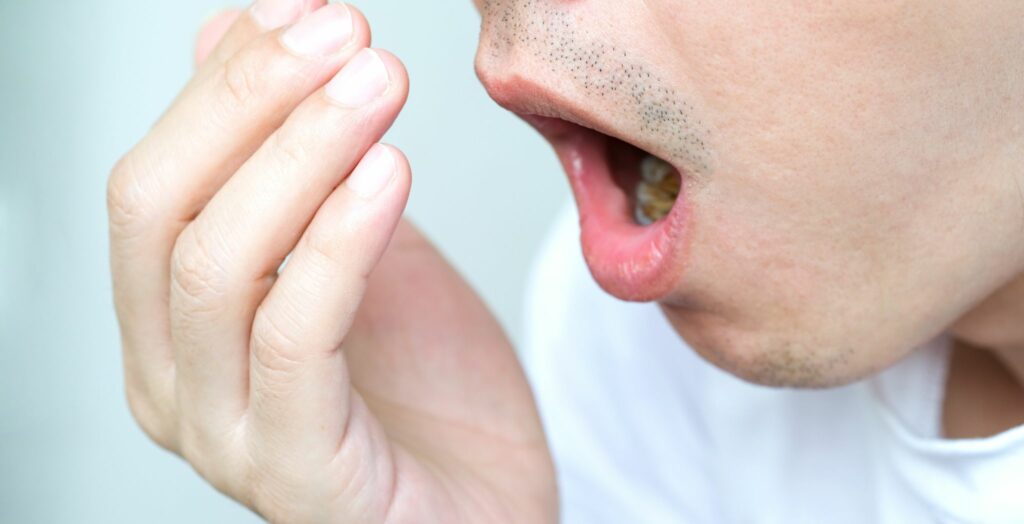Ever wonder what that little string is all about? You know, the one your dentist always tells you to use? We’re talking about dental floss!
It might seem like a small thing, but it’s a superstar when it comes to keeping your smile bright and healthy. Think of it as a secret weapon in your daily routine. Brushing is great, but it can’t reach all the tight spots. That’s where floss comes in to save the day.
In this blog, we’ll break down everything you need to know about dental floss, why it’s so important, and how to use it like a pro.
Why Dental Floss is an Essential Part of Oral Hygiene
Imagine a party in your mouth. Now imagine a bunch of tiny food bits and plaque trying to crash into it. These little troublemakers love to hide in the spaces between your teeth, where your toothbrush can’t reach.
Plaque is a sticky film of bacteria that builds up on your teeth. If you don’t get rid of it, it can cause all sorts of problems. Flossing is the only way to get into those sneaky spots and remove the plaque and food bits. It’s like a tiny, flexible cleaner that gets where your toothbrush can’t.
By doing this every day, you’re giving your mouth the best chance to stay clean and healthy.
Types of Dental Floss: Waxed, Unwaxed, Flavoured, and Others
Did you know there’s more than one kind of dental floss? It’s true! There are a few different types, and you can pick the one that works best for you.
- Waxed Floss: This is a popular choice. It has a waxy coating that helps it glide easily between your teeth. If you have tight spaces or your teeth are close together, waxed floss is a great option. It’s less likely to get stuck or shredded.
- Unwaxed Floss: This one is a bit thinner and has no coating. Some people feel it gives a better “squeaky clean” feel because it can grab more plaque. However, it can sometimes shred or get caught in tight spots, so it’s best for those with more space between their teeth.
- Flavoured Floss: Who says flossing has to be boring? You can get floss with fun flavours like mint or cinnamon. This can make the experience more pleasant, especially for kids or anyone who finds the taste of unflavoured floss a bit bland. If a tasty floss gets you to use it more often, then go for it!
- Dental Tape: This is a bit thicker and wider than regular floss. It’s a good choice for people with wider gaps between their teeth or those with dental bridges. It’s strong and less likely to break.
You can try a few different types to see which one you like best. The most important thing is to find one you’ll actually use every day.
How to Properly Use Dental Floss for Optimal Results
Now for the fun part: learning how to floss the right way. It’s not just about pushing the string between your teeth. Here’s a simple step-by-step guide:
- Get a good piece: Tear off about 45 centimetres (about 18 inches) of floss. That might sound like a lot, but you need a fresh piece for each tooth.
- Wrap it up: Wrap most of the floss around your middle fingers, leaving a short bit in the middle. This gives you a good grip.
- Hold it right: Use your index fingers and thumbs to hold the floss tightly. You should have a short, taut section (about 2-3 cm) to work with.
- Slide it gently: Gently slide the floss between your teeth using a gentle back-and-forth motion. Don’t snap it down, as this can hurt your gums.
- Make a “C” shape: Once the floss is between your teeth, curve it into a “C” shape against one tooth. Slide it up and down gently, making sure to go just under the gum line.
- Do the other side: Now, curve the floss into a “C” shape against the other tooth in that gap and repeat the up-and-down motion.
- Move on: Unwind a fresh section of floss from your fingers and move on to the next gap. Use a new, clean section for each space.
- Don’t forget the back: Make sure to floss the back of your very last teeth on both the top and bottom.
It might feel a little awkward at first, but with a bit of practice, you’ll be a flossing master in no time!
The Benefits of Flossing Regularly
Why bother with all this fuss? The benefits are huge! Flossing is one of the best things you can do for your oral health.
- Prevents cavities: By removing plaque and food bits, you’re getting rid of the stuff that causes cavities. Plaque eats away at your tooth enamel, creating tiny holes. Flossing stops this process.
- Stops gum disease: Gum disease, also known as gingivitis, starts with inflammation and bleeding gums. This is caused by plaque building up around the gum line. Flossing removes this plaque and keeps your gums healthy.
- Freshens your breath: Bad breath (or halitosis) is often caused by bacteria and food bits left in your mouth. When you floss, you’re getting rid of the sources of bad smells, leaving your mouth feeling and smelling fresh.
- Saves you money: In the long run, regular flossing can save you a lot of money on expensive dental treatments. A little bit of effort each day can help you avoid fillings, crowns, and other procedures down the track.
- Helps your overall health: Believe it or not, your oral health is connected to your overall health. Studies have shown links between gum disease and other health issues, like heart disease. A healthy mouth is a step towards a healthy body.
Common Flossing Mistakes and How to Avoid Them
Even with the best intentions, it’s easy to make a few flossing mistakes. Here are some common ones and how to fix them:
- Not flossing daily: Consistency is key! Aim to floss at least once a day. You can do it in the morning or at night—the important thing is to make it a habit.
- Being too rough: Remember, you’re not trying to saw through your teeth. Be gentle! Snapping the floss can injure your gums. Use a gentle, sliding motion.
- Using the same section of floss: Reusing the same section of floss just moves bacteria from one spot to another. Make sure to use a new, clean part of the string for each gap.
- Not flossing correctly: Just sliding the floss in and out isn’t enough. You need to make that “C” shape and gently scrape up and down on both sides of each tooth.
- Giving up if your gums bleed: It’s common for gums to bleed a little when you first start flossing, especially if you have some gum inflammation. Keep at it! The bleeding should stop as your gums get healthier. If it continues for more than a week, see the dentist.
Alternative Flossing Tools: Floss Picks, Water Flossers, etc.
If traditional floss isn’t for you, don’t worry! There are other great tools you can use.
- Floss Picks: These are small, plastic tools with a piece of floss already stretched between two prongs. They’re super convenient and a great option for people who find it hard to use traditional floss, like kids or people with limited hand movement.
- Water Flossers (or Waterpiks): This tool uses a stream of water to blast away plaque and food bits between your teeth and along the gum line. It’s a fantastic option for people with braces, bridges, or other dental work. It’s not a replacement for traditional flossing, but it’s a great extra step to get a deep clean.
- Interdental Brushes: These are tiny brushes that fit between your teeth. They come in different sizes and are great for people with wider gaps or those with braces.
The best tool is the one you will use regularly. Talk to the dentist about which option might be best for you. If you’re a local to the area, a friendly dentist in Penrith or the dentist Cranebrook can give you some great advice.
How Flossing Helps Prevent Gum Disease and Cavities
Let’s dig a little deeper into how flossing is a superhero for preventing these two major dental problems.
Preventing Gum Disease
Gum disease starts when plaque builds up along your gum line. This plaque is full of bacteria that release toxins. These toxins irritate your gums, causing them to become red, swollen, and prone to bleeding. This early stage is called gingivitis.
If you don’t do anything about it, it can develop into a more serious problem called periodontitis, which can cause your gums to pull away from your teeth and even lead to tooth loss. Flossing gets rid of the plaque at the gum line, preventing problems before they become serious.
Preventing Cavities: A cavity is a hole in your tooth. It happens when plaque on your teeth creates acids that eat away at your tooth’s outer layer, called enamel. Cavities love to form in the tight spaces between your teeth because it’s so hard to clean there. Flossing removes this plaque, so the acid can’t form, and you’re much less likely to get a cavity.
When to See a Dentist for Issues Related to Flossing
Most of the time, flossing will be a smooth and easy part of your routine. But sometimes, you might need to chat with a professional. See the dentist if:
- Your gums bleed a lot and for a long time: A little bit of bleeding when you start is normal, but if it continues for more than a week or if the bleeding is heavy, it could be a sign of a more serious issue.
- You have persistent bad breath: If daily brushing and flossing aren’t helping your bad breath, the dentist can help figure out the cause.
- Your floss keeps shredding or getting stuck: This could mean you have a rough spot on a filling or a sharp edge on a tooth that needs to be checked out.
- You have pain when you floss: Any pain is a sign that something isn’t right. Don’t ignore it!
- You’re just not sure you’re doing it right: The dentist or dental hygienist can show you the correct technique and give you a few pointers.
If you’re looking for a friendly team, consider a dentist in Penrith or Cranebrook for local advice.
Conclusion
So there you have it! Dental floss might be a small, simple tool, but it plays a massive role in keeping your teeth and gums healthy. Brushing is like cleaning the floor, and flossing is like getting into all the corners and under the furniture. Both are essential for a truly clean space. Making flossing a daily habit is one of the best investments you can make in your health. It’s a simple step that can prevent pain, save you money, and keep your smile looking great for years to come.
So, What Are You Waiting For?
Grab some floss and get started today! Your smile will thank you for it. And remember, if you have any questions or concerns, don’t hesitate to book an appointment with Cranebrook Dental, one of the trusted dentists in the Penrith and Cranebrook area.
A healthy smile is a happy smile!



